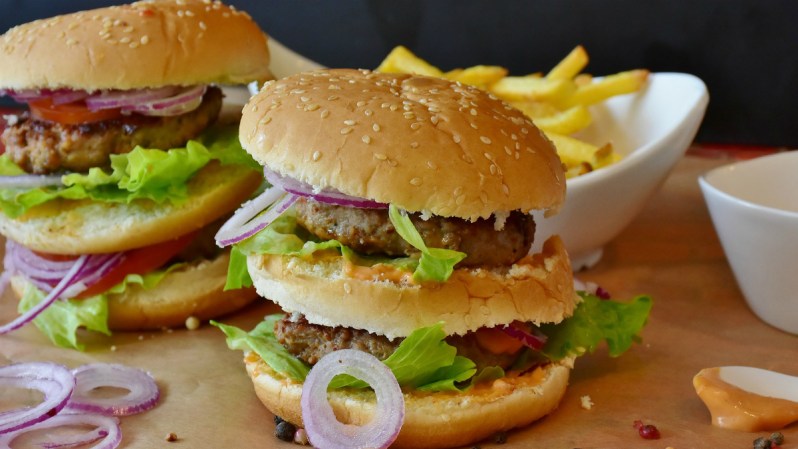At it’s very simplest, life is easy. We are, we do, and then we die. Since we control only the middle piece of that equation, it’s the only piece we should focus on. So let’s talk about the do: life, goals, and daily routines.
A person’s life can be defined as an accumulation of their accomplishments. Whether personal or professional, major or minute, an accomplishment is simply a goal that has been reached. To reach your goals, though, is where the real work is. If you imagine each goal as the top of a mountain, there are many steps to take in order to reach the peak. Think of these steps as your daily routine. Basically, you’re just a guy climbing up countless mountains, to reach various goals, in an effort to fill your backpack — aka life — with accomplishments. Just like we said: easy.
So how does one set goals, create routines, and find accomplishments? We at The Manual researched tips and put them to test. Consider the following template as a guide to your accomplished life.
Define Clear Goals

To accomplish a goal, it should first be clearly defined. Furthermore, the intermediate steps and benchmarks should be understood. A goal is simply a personal project, and any project manager worth their salt knows to define their end goal and work backwards to create a timeline and benchmarks. We could all benefit greatly from this approach, evidenced in a month-long study completed by Dr. Gail Matthews at the Dominican University of California.
In Dr. Matthew’s study, one group was asked to set goals by thinking about them in detail. A month later, only 43 percent had either accomplished their goals or were half way there. A separate group was asked to write out and rate goals, to write action commitments for each goal, to share these commitments with a friend, and to send a weekly progress report to a friend. In that group, 76 percent of participants either accomplished their goals or were half way there in a month’s time. The findings here are clear: to succeed, you’ve got to put in the work.
Before we jump into our life goals, though, let’s take a brief moment to acknowledge our time restraints here. Most of us have a lot going on in our lives so it’s important to choose a feasible workload. The Bureau of Labor Statistics found that the average American only has about 45 minutes a day to spend on personal care activities. However, we also enjoy leisure activities and sports for five hours a day … The good news here is that we have the time, but the reality is that we only have so much. Choose the most important goals for yourself without biting off more than you can chew.
Takeaway:
- Write out a list of clear goals.
- Choose important goals that you have time to work towards.
- Define concise and achievable benchmark goals.
- Put together a daily or weekly routine to reach your benchmark goals.
- Get started!
Daily Reminder

What will keep you on track day after day? This one is up to you. Are you the kind of person that needs to see a 3×5 card tacked on a cork board, or to have the technological equivalent on your smartphone? Or is a quiet five minutes in the morning a better tool to think through your tasks for the day? Regardless of methodology, the mindfulness is what’s important. If there isn’t a support system in place to push your efforts forward, then foregoing your morning run or skipping that networking meeting in the evening will be so much easier to do. Don’t just commit — remind yourself daily why you’ve committed.
Takeaway:
- Build in a daily reminder to keep you on track.
- Remind yourself why your goals are important.
- And do it.
Tools

It’s becoming clear that this isn’t as easy as we originally said. Luckily, we are living in an age that is chock full of tools to help us along our way. We’ve already discussed the planning and support stages of goal setting; now lets consider what tools we can leverage to get us to the top of that mountain.
An obvious tool here is the smartphone. Not only do you have the internet at your fingertips, but you can also download pretty much any app for any reason to do anything. So, in order to stay focused here, we looked at a list of common 2018 New Year’s resolutions collected by Statistic Brain and found tools to help those in the top three categories.
Weight Loss
This one might be the most challenging goal for some, but it’s also the easiest to set up for success. If weight loss is the goal, then diet is the answer. Exercise is important for overall good health, but, as noted by Forbes, diet is 80 percent responsible for achieving desired weight loss results. If you want to lose weight, follow these three guidelines: cook your own meals, plan and shop for healthy recipes you’ll want to eat, and limit your restaurant visits to one or two times a week.
To revamp a diet, we like EatingWell.com, which is a well-designed site that makes it extremely easy to find appetizing recipes with simple, healthy ingredients. If you pick
Life/Self Improvements
Although pretty open-ended, we could all find at least one goal that falls into this category. This is where we decided to get personal. For this author, the life improvement that came up first was sleep. Some people don’t sleep well naturally and others just don’t have enough time in the day to get a proper nights rest. Not me — I could sleep in every day if that were a reasonable option, and with a flexible work schedule, I let it go too far. So I decided to make a goal, build a routine, find a tool, and give it a go.
In this experiment I utilized the Apple Bedtime tool built into Apple’s iPhone clock platform. Super easy to set up, I decided that a 10 p.m. bedtime and 6 a.m. wake-up seemed reasonable. Every night at 9:30 p.m. I received a reminder to get ready for bed. Every morning at 6 a.m., soothing music gently shook me awake. And you know what? It was really hard.
After the first couple of nights and mornings, which actually went pretty well, I started to go back to old habits. I kept adjusting my bedtime and slept past my wake-up times without holding myself accountable. My first benchmark was to see if I could get through a week with a consistent sleep cycle (at least for weekdays). Apple’s Bedtime feature has a simple sleep analysis history that showed me how just how poorly I committed to my daily sleep routine.
Thinking about the week, I noted that my poor sleep patterns also affected my work and exercise routines negatively. I wasn’t any closer to my goal than the week prior. The result? I recommitted to my goals, took five minutes each morning to think through the day intentionally, and followed a better sleep routine. After one month, I am now regularly sleeping 8 hours a night — at least on weekdays — and actually getting up in the morning. It takes time for the body to adjust, but once intention turns into routine, it becomes so much easier. With this one goal accomplished (although not over), I can build on my success and head towards the next mountain: a consistent fitness routine.
Financial Management
If you’re ready to save some money, or at least spend it smarter, you’re going to need some statistics. Wouldn’t it be nice to see where you’ve spent every one of your hard earned dollars at over the last month, or year even? Check out Mint App. You can connect all of your bills, credit card statements, and cash expenses to capture where every last cent of yours has been spent. The app breaks down your expenditures into categories like coffee shops, gas, grocery stores, and more to provide transparency. As an added bonus, you can build budgets, pay bills, and get a free credit score through this free app. Before better financial decisions can be made, better financial clarity is essential.
Cheat

If you don’t cheat on your goal, you probably won’t achieve it. Humans are weird, and we all know this. If we fail even once in our attempt to reach a goal, we open a door to irrational and emotional thoughts that can make it so much harder to ever reach our mountaintop. Instead of setting yourself up for failure, it’s better to incorporate some relief into your routine by including a “cheat day,” or time where you take a routine break to indulge yourself.
This is beneficial in both a practical sense — to allow for flexibility so your routine can fit with your lifestyle — and psychologically. Adam Sinicki from Health Guidance says it bestin his article about cheat days: “Having cheat days shows you that it doesn’t really matter if you occasionally slip up. What’s more important is changing your habits in the long-term.” If you incorporate one cheat day a week, it’s much more likely that you’ll be able to stick to your routine regularly to reach your goal. That means order those nachos, sleep in late, have a heavy night at the bars — but keep it to once a week.
Discipline
Even with actionable items mapped out, it still takes work. Passion is great, but it’s fickle and unreliable. Motivation is necessary, but it is only a piece of the puzzle. In order to find continued success, we believe that the best philosophy should be built on discipline. We like this definition of discipline from Merriam-Webster: “Training that corrects, molds, or perfects the mental faculties or moral character.” To reach a goal isn’t a one-and-done situation, it means putting in the work, creating a long-term change, and turning a goal into an accomplishment that you hold on to. To return to our analogy: Once you’ve climbed to the top of the mountain and reached your goal, it becomes an accomplishment to put in your backpack. As you turn to look for your next mountaintop, though, you’ll notice your accomplishment has it’s own weight, and you will need to rely on your discipline and strength to continue moving forward.


